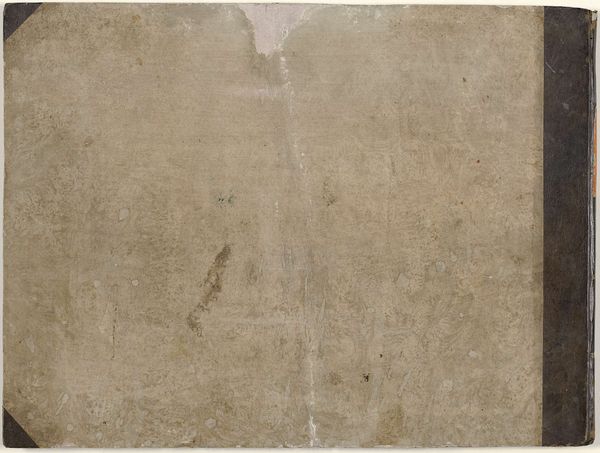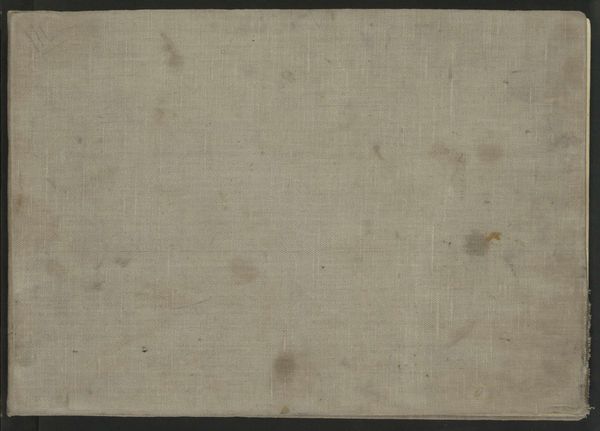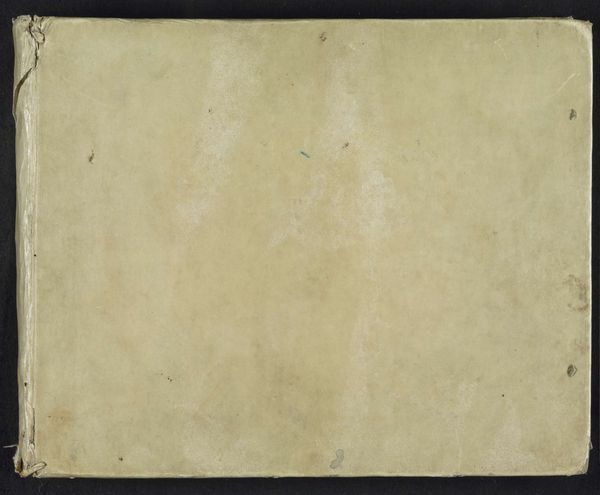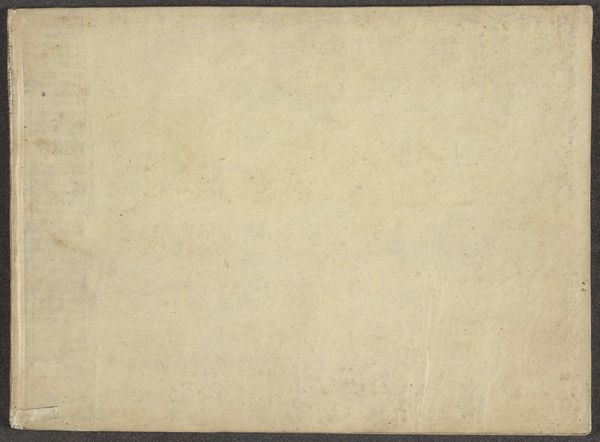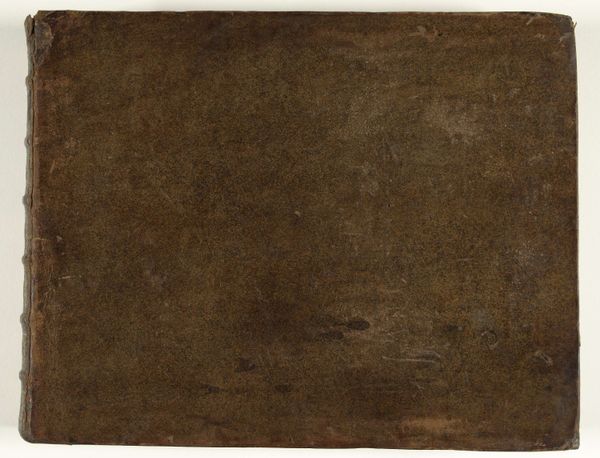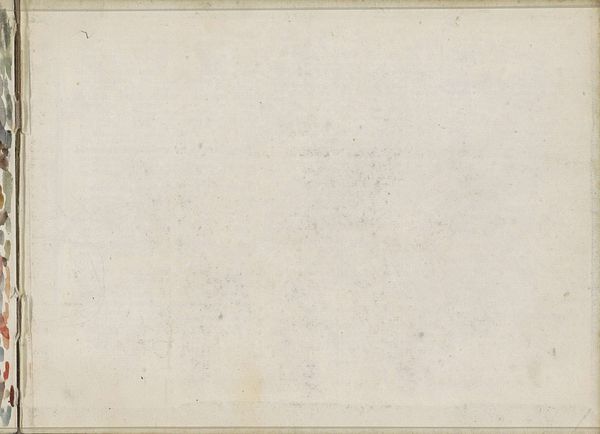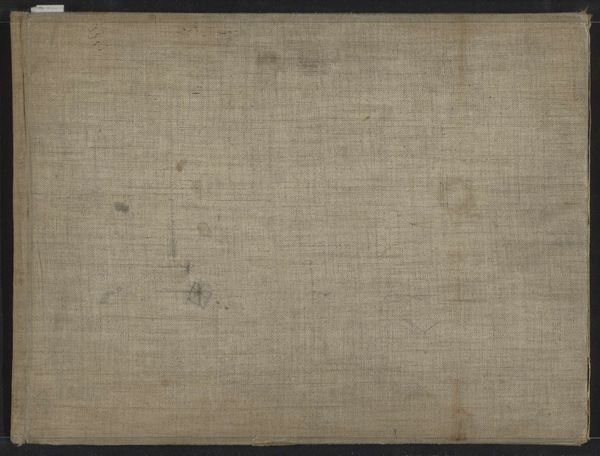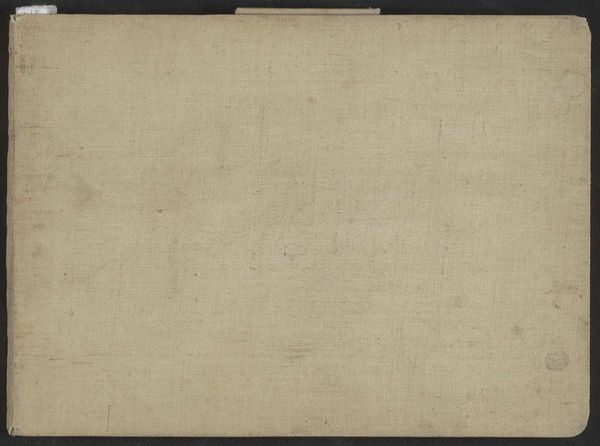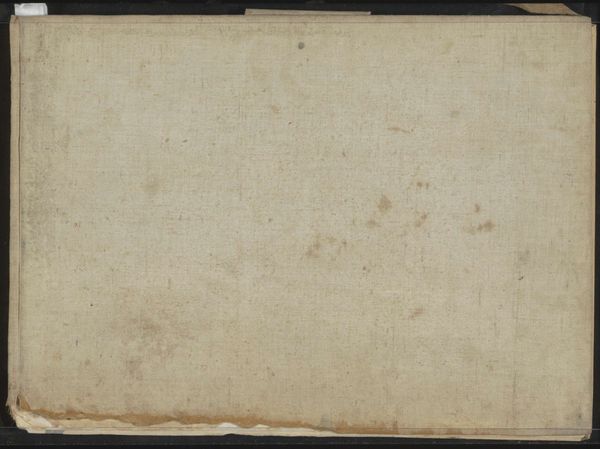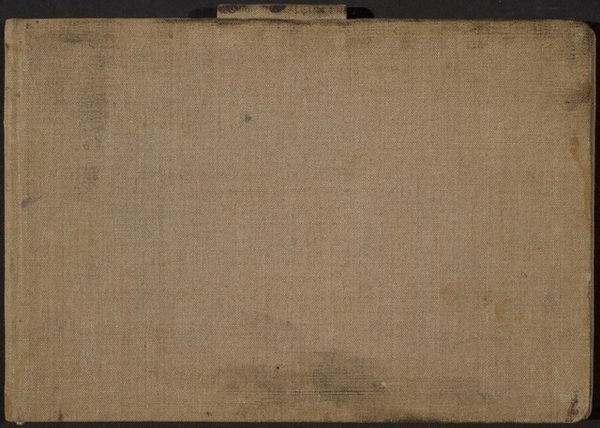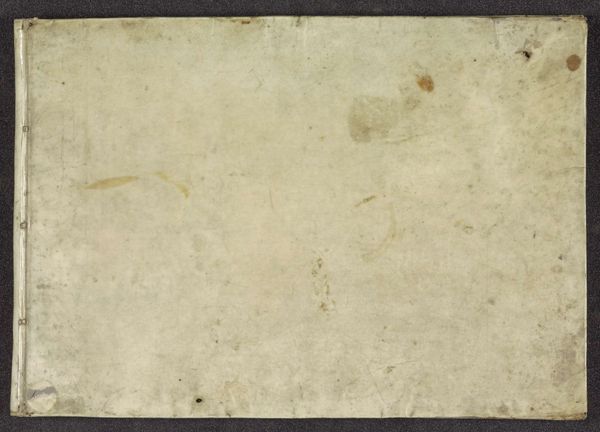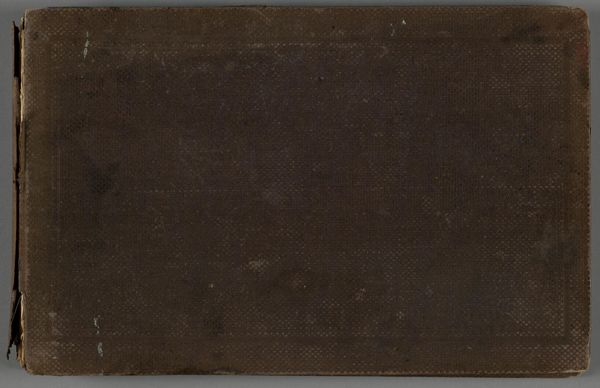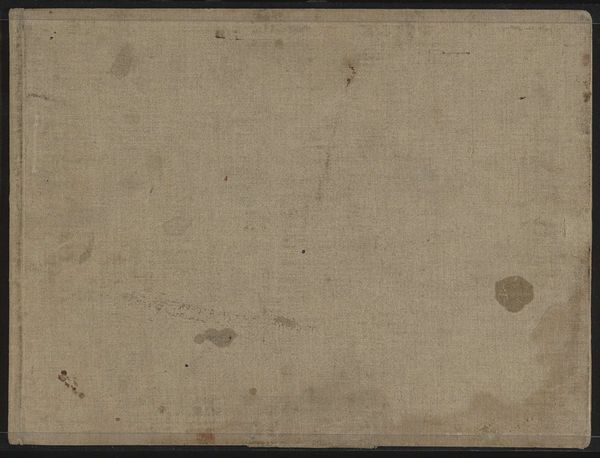
print, etching, paper, engraving
# print
#
etching
#
paper
#
11_renaissance
#
history-painting
#
engraving
#
watercolor
Dimensions: height 395 mm, width 540 mm, thickness 35 mm
Copyright: Rijks Museum: Open Domain
Curator: I'm struck by how muted and aged the album cover appears, a stark contrast to what I imagine are the vivid scenes within. It’s a bit like finding a treasure chest whose lock has rusted over, hinting at stories and artistry hidden beneath layers of time. Editor: It is precisely that temporal layering I find fascinating. What we see here is the binding for the "Album met 34 prenten van Tortotel en Perrissin," dating back to 1570. Think of the material reality: paper meticulously engraved and etched, a collaborative work intended to capture events... to disseminate history, really. Curator: Absolutely. And yet, what history? One filtered through the lens of Jacques Tortorel and Jean Perrissin, the artists. These aren't just objective records; they're interpretations, emotional responses translated onto paper. I sense a profound engagement with the political and religious turmoil of the time. Editor: Indeed, the materials speak volumes. Paper was relatively precious then. Each etching, each engraving, a testament to skilled labor. And consider the intent of these "history paintings"—to sway public opinion, to commemorate victories... essentially, a very early form of propaganda utilizing accessible reproducible media. Curator: Which makes the act of preservation—the album binding itself—all the more poignant. Someone, at some point, deemed these images worthy of protection. Did they understand the power within those delicate lines, that whisper of history caught between the paper's fibres? The brown aging, each little blemish of water or damage – only adds to its strange character! Editor: Precisely! The blemishes ARE the story. Think about how many hands this album has passed through, how each owner imbued it with new meanings. Was it prized, forgotten, rediscovered? That history of use IS part of the material artwork! I can not overstate that the creation and use of print were a paradigm shift in social communications of its time. Curator: You're right. It's a physical echo of the past, whispering tales of artistry and agency. What I love about encountering such art, so rich with age and materiality, is realizing we're only a single audience member in an ever expanding theater, with so many forgotten plays from which to pick and choose new narratives! Editor: A perfect point: By interrogating material history, perhaps we can see the social function, not the beauty or story. It adds another crucial element when exploring cultural inheritance, because artmaking is work, however glorified, however precious its products might seem.
Comments
No comments
Be the first to comment and join the conversation on the ultimate creative platform.
